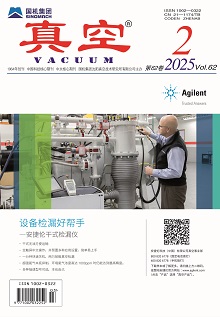|
|
Vacuum Electron Beam Welding of Semi-Y-state Oxygen Free Copper Plate in Boat Shape RF Cavity
XING Yin-long, WU Jie-feng, PEI Shi-lun, LIU Zhi-hong, LI Bo, LIU Zhen-fei, MA Jian-guo
VACUUM
2022, 59 (5):
69-73.
DOI: 10.13385/j.cnki.vacuum.2022.05.12
High power proton beam accelerators are widely used in basic physics, nuclear industry, family safety and other fields, in which high-power waveguide RF cavity is very important. Boat shaped RF cavity has the highest no-load Q value and shunt impedance, which is a good choice for GeV proton beam accelerator. For the manufacture of boat shape copper cavity, the biggest difficulty lies in the forming of boat shape cavity and the welding of copper. In this paper, the 6mm thick semi-Y-state oxygen free copper(OFC) electron beam welding joint is studied, and a detailed vacuum electron beam welding process is developed. The results show that after electron beam welding, the welded joint of semi-Y-state OFC plate has no obvious surface defects, and the as-cast microstructure is equiaxed crystal. From weld to base metal, the microhardness of semi-Y-state OFC welded joint changes significantly, and the microhardness of weld is about 65% of the base metal. After stretching at room temperature, the semi-Y-state OFC welded joint has obvious plastic deformation, and the fracture occurs in the weld fusion zone. The tensile strength of semi-Y-state OFC welded joint is equivalent to 95% of the base metal, about 228MPa, and the elongation after fracture is 64%-67%, which can meet the welding and forming requirements of boat shape RF cavity. In this paper, the vacuum electron beam welding process of semi-Y-state OFC plate is introduced in detail, which provides a test basis for the manufacture of boat shape RF cavity.
Reference |
Related Articles |
Metrics
|
|








